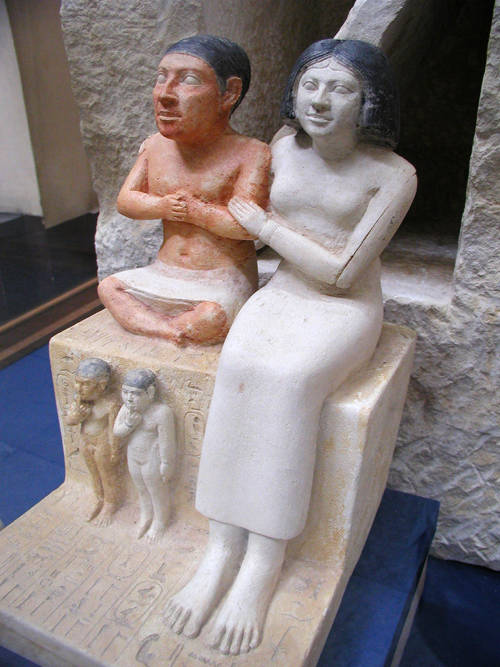Facts About Seneb
Seneb was a prominent court official in Ancient Egypt's Old Kingdom, around 2520 BC. Despite being a dwarf, Seneb held significant influence and amassed considerable wealth, owning thousands of cattle and several palaces, as well as holding various religious titles. He was married to a high-ranking priestess, and together they had three children. Seneb's illustrious career and elaborate burial arrangements underscore how Ancient Egyptian society accepted and integrated individuals with physical disabilities.
In 1926, German archaeologist Hermann Junker discovered Seneb's tomb in the West Field of the Giza Necropolis, near modern-day Cairo. The tomb, dating back to the reign of Djedefre, contained a painted limestone sculpture depicting Seneb with his family, along with two other statues. This familial sculpture, now housed in the Egyptian Museum in Cairo, displays a harmonious and cleverly designed composition that employs negative space to maintain symmetry.
Seneb's dwarfism, likely resulting from achondroplasia, is realistically depicted in the sculpture, showcasing his large head and shortened limbs. However, his wife and children are portrayed with standard proportions. Seneb held various titles, including overseeing royal linen and possibly pets, as well as various religious roles. The reliefs and false door in his tomb illustrate his wealth and power, depicting scenes of domestic life and religious rites. These reliefs also demonstrate artistic choices made to uphold conventions of status and size portrayal despite Seneb's physical stature.

 Sudan
Sudan